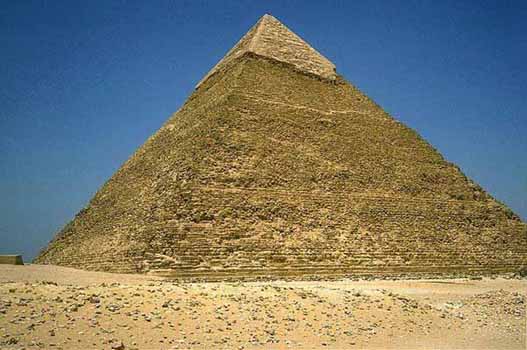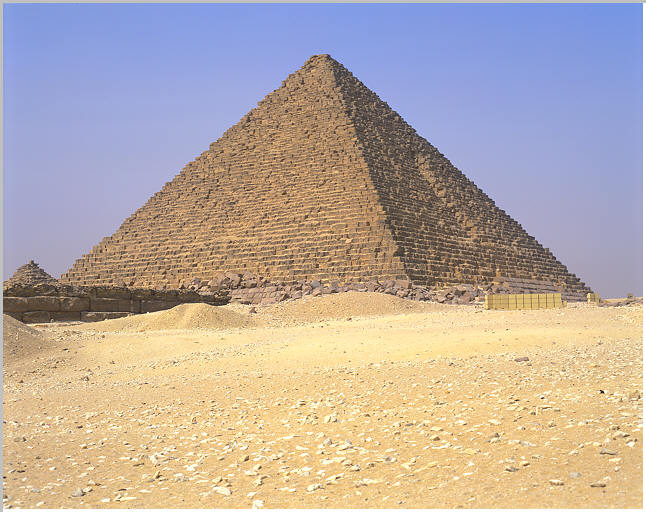The step pyramid was built in 2630 B.C. , the size of the pyramid originally stood 62 metres (203 ft) tall. It was also amde from polished limestone
The Meidum Pyramid was built in 2600 B.C., it was orginally built for Huni, but his son Snefru continued it . Overtime it started to collapse by the degree it was on.
The Bent Pyramid is named that by the degree it was on, it was also the first attempt of a classic shape. The Pyramid was built in 2600 B.C. after the collapse of the Meidum Pyramid.
The Red Pyramid was the first tru pyramid, it was also one of the largest from the three major pyramid. It was built in 2600 B.C. by Snefru.
The Great Pyramid of Giza was built by Khufu, it is also one of the greatest 7 wonders ever built. it was built in 2550 B.C..
The Pyramid of Khafre is home to the Sphinx. The pyramid was built 2520 B.C. and was also said to be robbed.
The Menkaure Pyramid is the last of the Great Pyramids of Giza. It was built in 2490 B.C..
The Pyramid of Pepi II was the last of the Pyramids and was signed as the ending of an Era. The Pyramid was built in 2250 B.C. .
 The Soldiers
The Soldiers The Nobleman
The Nobleman




